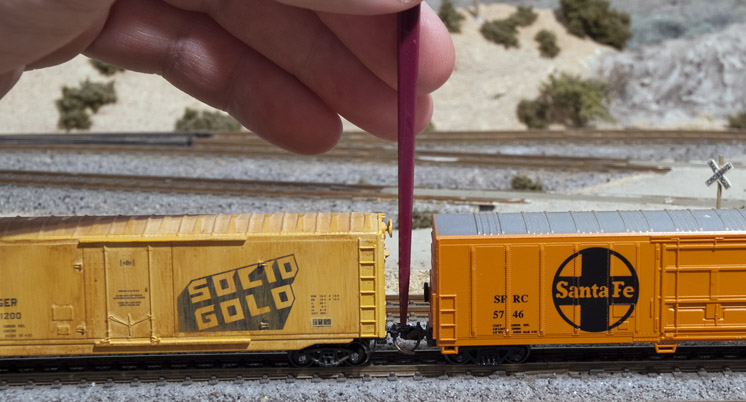
I was having lunch with a tableful of in-laws at Maggiano’s Little Italy, a popular chain with a restaurant near my home, when my eyes were drawn to the little red stir stick in my beverage. It was 51⁄2″ long, shaped like a sword, and had a tip that looked as if it would work well for uncoupling N scale freight cars.
I took it home, tried it out, and found it worked even better than I thought it might. Evidently, the design requirements for spearing olives or lemon wedges and opening N scale coupler knuckles are very similar. And the even better news was that I had scored a half-dozen more stirrers from relatives, making it a highly successful evening.
In the months since I have acquired more stirrers from the restaurant, and I’ve also tried some from other establishments. Some work OK, but none quite as well as those little red swords.
If you want something specifically designed for model railroaders, Rix makes an uncoupling tool that works very well. It costs $3.95 – I own four – but the little swords work almost as well. And you can arm your layout with dozens on the cheap; the stirrers were free (with drink purchase, of course).
But now I turn to things that weren’t free, though they did turn out to be worth every penny.
Most of the coupling and uncoupling on my layout happens in Bakersfield. This is on my lower level, 43″ above the floor. I would be the first to agree that this is too low, both for visual and operational reasons.
Because our N scale trains are small, I like them up where I can see them. A height of about 52″ would be ideal. But I had to start my N scale layout low, because my trains have a mountain to climb. Because of the low height, Bakersfield is best operated from stools. This is made easier because in N scale, more yard tracks are within easy reach of the layout’s edge and the cuts of cars are shorter than they would be in the larger scales. Operators are bobbing up and leaning forward from their stools quite a bit, but they don’t have to walk around much.
The stools would also be handy on the mountainous part of the railroad. The main purpose of my Tehachapi Pass layout is to run trains up and over the Tehachapi Mountains. This wouldn’t be so tough if the pass had multiple tracks, as do Donner or Cajon, but the Tehachapi route is so circuitous with so many tunnels that the best the Southern Pacific could do was a single-track railroad with some passing sidings squeezed in.
So, because my mainline train operators are running on a single-track main, they’re going to get sidetracked a lot waiting for an oncoming train – or sometimes several – to come through.
To be prototypical, my engineers ought to be sitting while they wait – that’s what the trainmen are doing in real locomotive cabs. (I once saw an SP engineer with his feet up on the control stand, reading a Zane Grey Western novel. Looked pretty ideal to me.)
How nice it would be, I thought, if the crew had portable stools they could carry along with them, or just pull out from under the edge of the layout.
Finding such stools turned out to be a surprisingly difficult 18-month search, probably because I had no idea where to look. Ask most people for leads on stools and you’ll end up looking at bar stools or kitchen stools, or maybe here in Wisconsin, milking stools. Kitchen stools were way too heavy, but svelte compared to bar stools. Most bar stools have heavy legs and footrests, arms, and a back, and seem better suited to hooking marlin.
Finally I found exactly what I was looking for at Target. It was a simple black stool with steel legs. They came in 2-foot and 3-foot heights; the former has worked out well. The price was right, $12 apiece. I bought four. I’m thinking I’ll go back and get a couple of 3-footers to use where the layout is higher, namely at the Tehachapi Loop. If I’m going to sit a spell, that’s where I’d like to do it.





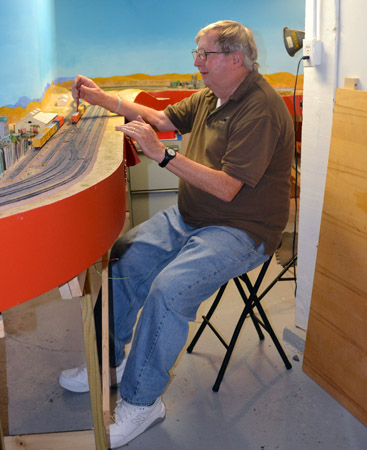

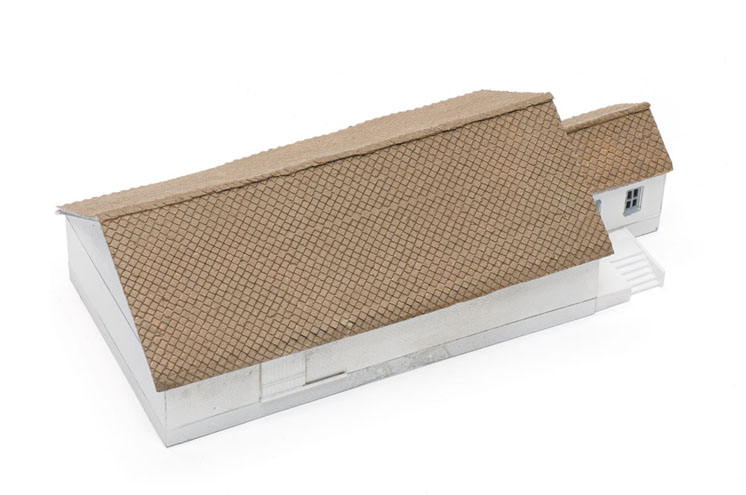
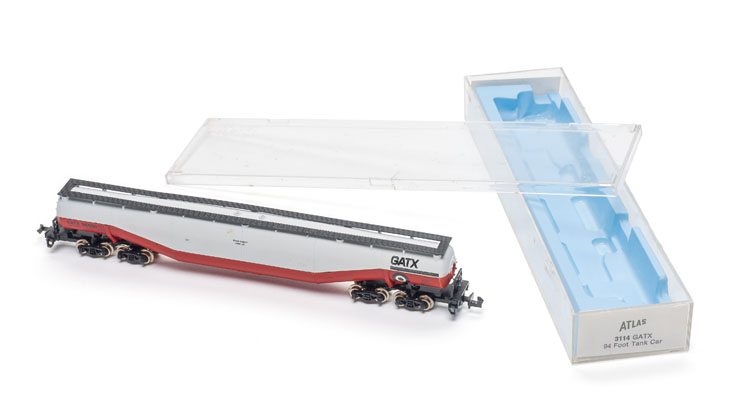
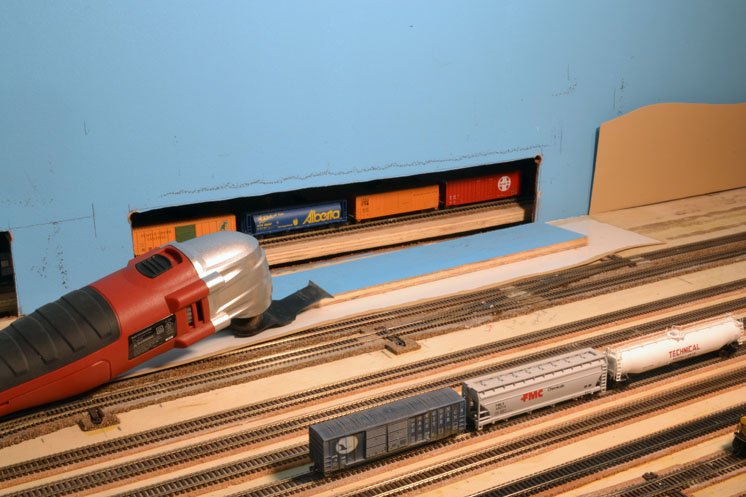
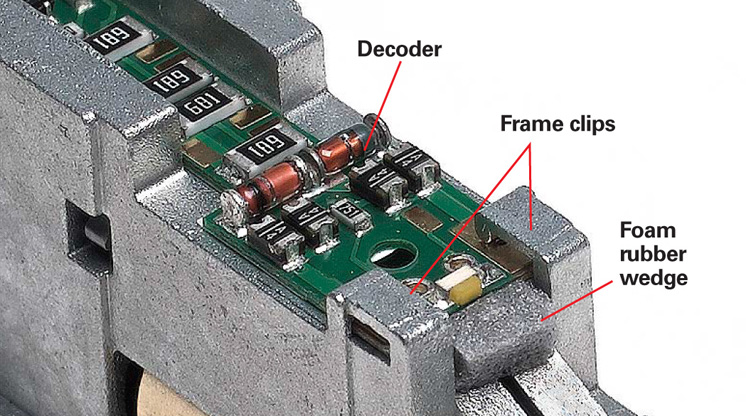




I like the suggestion of the “automotive type stool”. I was going to suggest something similar.
I’ve always stood to operate my layouts. I liked your suggestion of having part of the crew seated to further distinguish between the roles of the crew in the cab and the crew on the ground. Neat.
On the surface it would feel like those standing operators have a greater ease and range of motion with respect to walking the length of a yard (for example) as compared to a seated operator who might prefer most of his activities be within a close range of his seated position. Do you think that this would change the way we would design the layout? …from a seated position should we narrow the depth of the benchwork to make the entire scene more accessible?
/chris
The cheapest stool at Target's web site: $15.89 for 24", $19.99 for 28"; in store only. These stools are wooden bar stools. (Google search: "target stools").
I LOVE your dilemma, in an appreciative manner. I'm confined to a wheelchair and am always disappointed at not being able to get involved in activities on a normal height layout. With the help of my son, I've developed a small N-scale layout at a height I can get my chair up to, for operations as well as to work on upgrades. The only thing I'd suggest as a potential upgrade down the road might be to try a stool on wheels if the yard area is large enough to permit it. Otherwise looks like you've got it in well in hand.
I would think that most liquor stores would carry the sword-type picks in the supplies aisle. As for the stool, how about an automotive type stool on wheels? Could that work just as well?
Better close up on the skewer would be nice or just ask the place were you got it from were the get them from. Who knows Amazon.com has just about everything if ou know what your looking for. Thanks